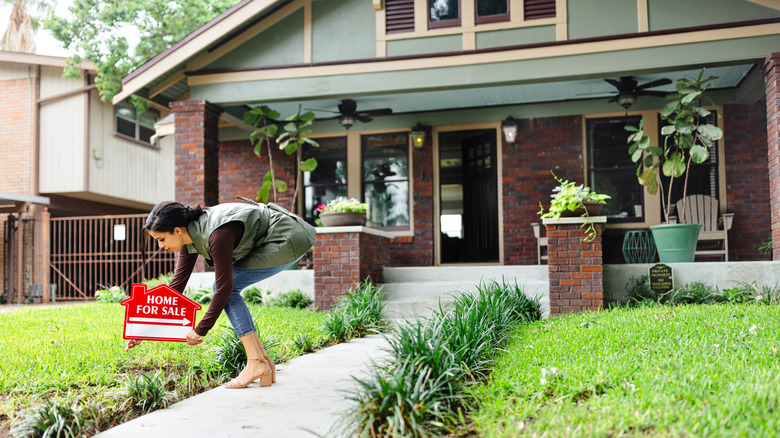Are Single-Family Homes Really Dropping In Price? Here's What We Know
Prospective homebuyers may have more negotiating power thanks to steadying prices and an increase in inventory, providing them more options when it comes to finding their dream homes. While many awaited the September news regarding the Federal Reserve interest rate cut prior to buying, others might take the opportunity to invest in single-family homes in big cities where price drops have reached lows not seen since 2018. For many, what the fed rate cut meant for mortgage rates and the housing market was a slightly lower interest rate range of 4.0% to 4.25%, with the Fed also stating the possibility of two more cuts this year. This is good news for many buyers.
Additionally, data from the S&P Cotality Case-Shiller Home Price Index shows a deceleration in home price growth. While national home prices have risen 1.9% year-over-year, it's the slowest growth we've seen since the summer of 2023, meaning an improvement in affordability. Further data has revealed 14 U.S. cities where home values have dropped significantly. However, other cities, such as New York, NY have seen gains, meaning location variations play a major role in these statistics.
Depending on location, homebuyers can expect lower prices for single-family homes
In the coming year, most U.S. buyers will have more leverage. According to Wolf Street, mid-tier single-family homes have dropped in price in 14 cities from their August data, with seasonal pricing taken into account. The data comes from seasonally-adjusted three-month data from the Zillow Home Value Index, focused on 14 distinct cities rather than Metropolitan Statistical Areas. In two of the cities observed, Oakland, CA, and Austin, TX (which saw the greatest decline), the price of a mid-tier single-family home dropped by 24% from August. Cape Coral, FL, New Orleans, LA, and San Francisco, CA followed with 19%, 18%, and 16% drops, respectively. Denver, CO, also made the top ten list with a 10% drop in home prices from August. Once-favored Sun Belt markets like Dallas, TX, Tampa, FL, and Phoenix, AZ are also seeing home value decline due to changes like employment growth elsewhere. Texas and Florida, in particular, have a ton of new unsold inventory that is tilting supply and demand in favor of the buyer.
However, some cities, such as industrial hubs like New York, NY and Chicago, IL, are seeing steep home values that continue to rise, despite the deceleration in other areas. According to Zillow, home values also continue to rise in Buffalo, NY, Cleveland, OH, Hartford, CT, Louisville, KY, and Detroit, MI — although the rise is slower than in recent years.
Nationwide, home values are predicted to trend downward
The housing trend that's great news for anyone buying in 2025 is that home values are expected to continue declining by the end of the year, down by 0.9% from the start of 2025. Currently, the U.S. average home value is up 0.2% nationwide within the past year, according to Zillow. For buyers, this comes as a breath of fresh air. According to the Wolf Street data, places like Oakland, CA, have seen a relatively consistent 1.5% drop month-over-month since July 2025. Home values today resemble 2018 prices, coming down from the 24% increase that occurred during the pandemic years.
Buyers may not be the only ones celebrating, however, as slower rent growth nationwide is also projected to continue until the end of the year. The Zillow Observed Rent Forecast estimates that single-family rentals will see an increase of 2.5% by the end of 2025, compared to the 4.5% price increase the year prior. Zillow notes, "This year would mark the lowest annual increase for single-family rents of any calendar year since at least 2018."
Home prices are no longer on par with inflation. For sellers, this may not be the best news, as pandemic-era home values grew at annual rates in the double-digits. Today, this value has lessened. For buyers, however, lower rates offer more negotiating power. With dropping prices and mortgage rates that are trending downward, hopeful homeowners could finally take the leap into purchasing a new property, and sellers may find a higher demand for their listings.


